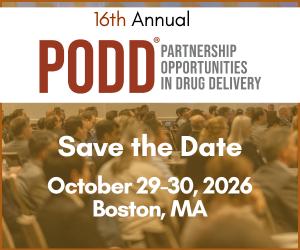
Beate Bittner, PhD, is Product Optimization Franchise Leader at Roche.
What are the main external trends impacting
product optimization?
The cost pressure on the global healthcare system is increasing. We learned that especially for biotherapeutics, shifting care, at least to some extent, outside of a controlled healthcare institutional setting can reduce the expenditures that are associated with drug administration.
This trend towards the possibility for home- and self-administration for parenterally administered products has been reinforced in light of the coronavirus pandemic. While in the past drug delivery improvements were frequently considered “nice to have,” today the value of product optimization is broadly recognized and changed into a must-have.
Are you seeing any new indications moving more towards flexible/-at home subcutaneous administration?
Assuming the molecule is safe and tolerated, this approach can in principle be applied to any indication. In indications with low dosing volumes and a favorable safety profile, such as monoclonal antibodies and other biotherapeutics in rheumatoid arthritis, inflammatory bowel disease, or multiple sclerosis, subcutaneous self-administration is an established reality. For indications with higher individual dose levels for monoclonal antibodies, the development of subcutaneous dosing alternatives did start later with the availability of high-concentration technologies or the dispersion enhancer hyaluronidase; and high volume on-body delivery systems are currently in development. Tools like connected devices and health apps, for example, can aid adherence in this remote setting, and physicians can supervise patients without directly being in contact with them.
"While in the past drug delivery improvements were frequently considered “nice to have,” today the value of product optimization is broadly recognized and changed into a must-have."
How do you define a flexible care setting?
Flexible care setting means that patients and their caregivers can choose the place of drug administration. Depending on their personal priorities this can be in the clinic, in an infusion center, at the patient’s home or even via self-administration. Not every patient would want to be dosed in the home setting. Some still prefer to go to the physician or to the clinic because they value the social contact with other patients and health care providers. Others are really keen to not travel too much and want to have more time for work or with their family; it is also dependent on the state of the disease.
Using the term “flexible care setting” actually helped us to get the stakeholders on board. When referring to “home administration of biotherapeutics,” people may be concerned that not everyone wants to be dosed at home or that the treatment is not sufficiently safe to be administered outside a health care institution. The term “flexible care setting” means that this setting is on a voluntary basis. If patients want it, and if the treatment is tolerated, they can receive the dose at home at the discretion of the treating physician.
In your recent book about biotherapeutic formulation and device lifecycle management, you mentioned that omitting the need for separate PK comparability studies for antibodies using the same device would expedite the approval process. How realistic is that?
I believe that this is something that could happen, assuming that regulators accept the approach. This would significantly reduce the costs and timelines associated with developing new device technologies. The approach could support clinical development of device platforms that are applied for several molecules. I assume a key aspect in the future will be technology platforms that are not only applied across the pipeline of one company but across those of other companies as well. This would benefit broader patient populations, because patients and healthcare providers would be more familiar with a smaller number of technologies. More sophisticated platforms would then be designed for special patient populations who may not be able to handle these standard platforms.
We expected this approach to have an impact also on the overall sustainability of a medication. Sustainability is not only about the materials used for a device technology, or drug wastage associated with the dosing regimen. Sustainability also includes aspects of the development costs. If these can be reduced, we provide an overall more sustainable product.
How else can we reduce costs?
It is very important that we do not duplicate activities that have been done previously for other molecules. For example, if you start developing a new technology in an indication, typically there is already patient and health care provider preference information available from another indication. We generally see that customer preferences and cost savings through the use of a technology are very comparable, independent of the indication.
How do you include market access into your work, particularly globally?
One key consideration for access to new technologies is how global health care providers are reimbursed for what they do in the different markets. What we see is a trend towards value-based reimbursement models. This is, for example, bundled payment or capitation. These models reward the efficiency of care. Any change in drug delivery that reduces drug preparation and dosing complexity is typically valued in these models.
If current models, such as fee-for-service that rewards the intensity of care, are to some extent replaced by these value-based payment models, this would further incentivize providers to prescribe the most efficiently administered product presentation. It would also support a shift to dosing outside of the clinic. This means that a flexible care setting is not just enabled through our product offerings; also the reimbursement system in a given legislation needs to value an improvement in the product profile of a medication.
Would that shift feed back into the types of innovation drug delivery developers pursue?
It would accelerate innovation development, because we would know that product optimizations are being valued in the different markets. To me, value-based reimbursement models further encourage manufacturers to invest into improving drug delivery of their medicines.
When embarking into the development of novel innovative technologies, manufacturers face the risk of failure of the technology itself. And if there is uncertainty around reimbursement of a healthcare provider’s work around the application of the technologies, this is an additional hurdle for investments into this field.
How do you balance time-to-market with product optimization?
For example, high-volume subcutaneous formulations would ideally be brought to the market with an on-body delivery system or patch device. As these device types are however still in development, we first launch the subcutaneous formulation for manual injection in a vial presentation, and only subsequently introduce a patch device.
This way we ensure patients have access to the subcutaneous formulation of the molecule as soon as possible, and then we can improve the product as a lifecycle management. We can also get feedback from patients on how subcutaneous dosing might be optimized during this period, and involve them in co-creating the most appropriate device design.
"If applying these technologies for oral delivery of biotherapeutics results in reasonable systemic exposure, that could be a game changer in drug delivery."
Where do you see the biggest growth or need in the next five years?
For me, the key one is still the reimbursement system that supports a reduction in dosing complexity and usage of new drug delivery modalities by stakeholders across markets.
Drug delivery-wise, I am excited about technologies that enable the oral delivery of biotherapeutics. If applying these technologies results in reasonable systemic exposure, with reasonable dosing frequencies and reasonable development and commercialization costs, that could be a game changer in drug delivery.
The more manufacturers embark into exploring the potential of these oral drug delivery technologies, and are willing to accept the investment risk associated with developing these innovations, the higher the potential that we as an industry will be able to develop an oral delivery platform that can be used broadly and cost-efficiently across disease areas.
Are you seeing the knowledge sharing happening with these newer technologies to avoid duplication?
I do see a lot of knowledge sharing already happening, but there is still too much duplication going on. Often, the different disease areas act as barriers to knowledge sharing for product optimization and drug delivery. But conferences like PODD that are indication-agnostic help making people aware of similar drug delivery optimizations in other fields, and they can start leveraging synergies and focus their efforts on indication-specific needs.
For a link to Dr Bittner’s new book, click here.








